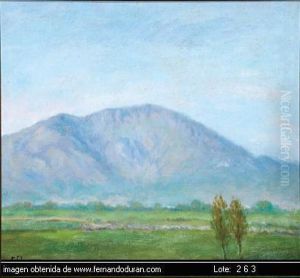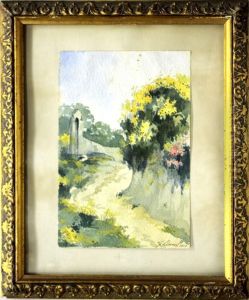Francisco Llorens Y Riu Paintings
Francisco Llorens Díaz, better known as Francisco Llorens y Riu, was a Spanish artist born on September 8, 1874, in Lugo, Spain. He was an influential figure in the Spanish art world during the late 19th and early 20th centuries and is often associated with the modernist movement. Llorens y Riu's work was characterized by its vibrant color palette, impressionistic style, and a focus on the interplay of light and shadow, which he used to capture the mood and atmosphere of his subjects.
Llorens y Riu received his initial training at the School of Fine Arts of San Fernando in Madrid, where he absorbed the classical teachings prevalent at the time. However, his style evolved significantly when he moved to Paris in the 1890s. There, he was exposed to the burgeoning Impressionist and Post-Impressionist movements that were revolutionizing the art world. He studied at the Académie Julian, a popular institution among international artists, and this experience in Paris deeply influenced his artistic direction.
Upon his return to Spain, Llorens y Riu became a part of the circle of modernist artists in Barcelona, which was a center for avant-garde art in Spain. His work began to reflect the modernist aesthetic, with a particular emphasis on Catalan landscapes, seascapes, and urban scenes. He became well-regarded for his ability to infuse his landscapes with a sense of emotional depth and for his depictions of the unique light found in the Mediterranean region.
Throughout his career, Llorens y Riu exhibited his work extensively, both in Spain and internationally, and his paintings were well received by critics and collectors alike. He became a member of various artistic societies and associations, which further established his reputation as a leading modernist painter.
Francisco Llorens y Riu passed away on June 29, 1948, in Madrid. Although he is perhaps not as widely known as some of his contemporaries, his work has been acknowledged for its contribution to the development of modern art in Spain and has been exhibited in numerous retrospectives and collections. His paintings continue to be appreciated for their vibrant energy, technical skill, and the unique perspective they offer on the Spanish landscape and culture during a transformative period in the country's history.

